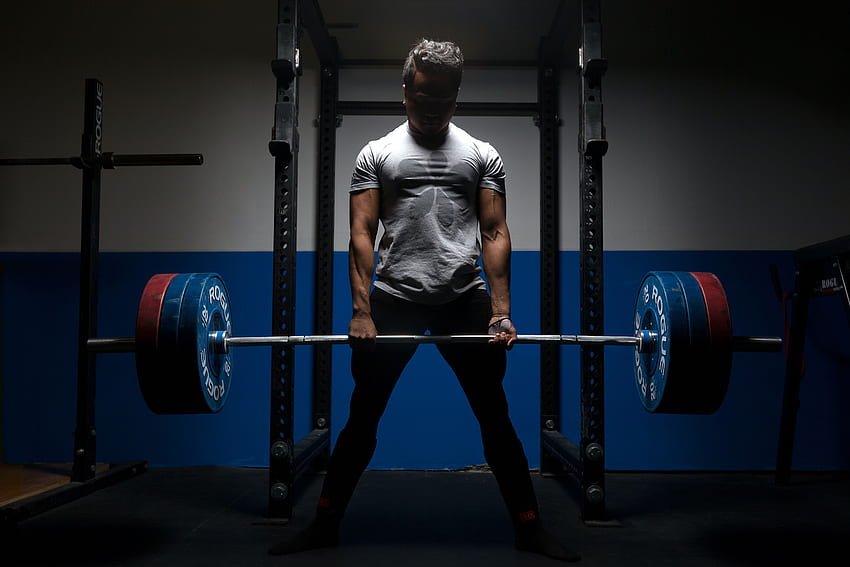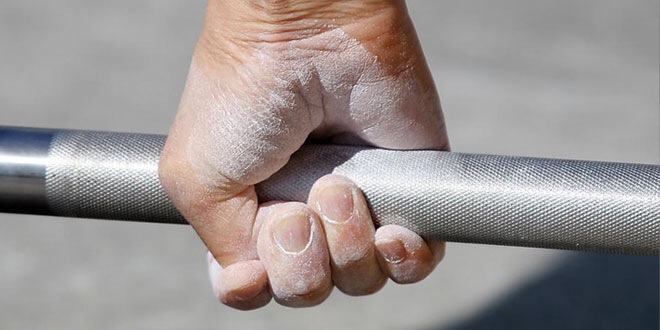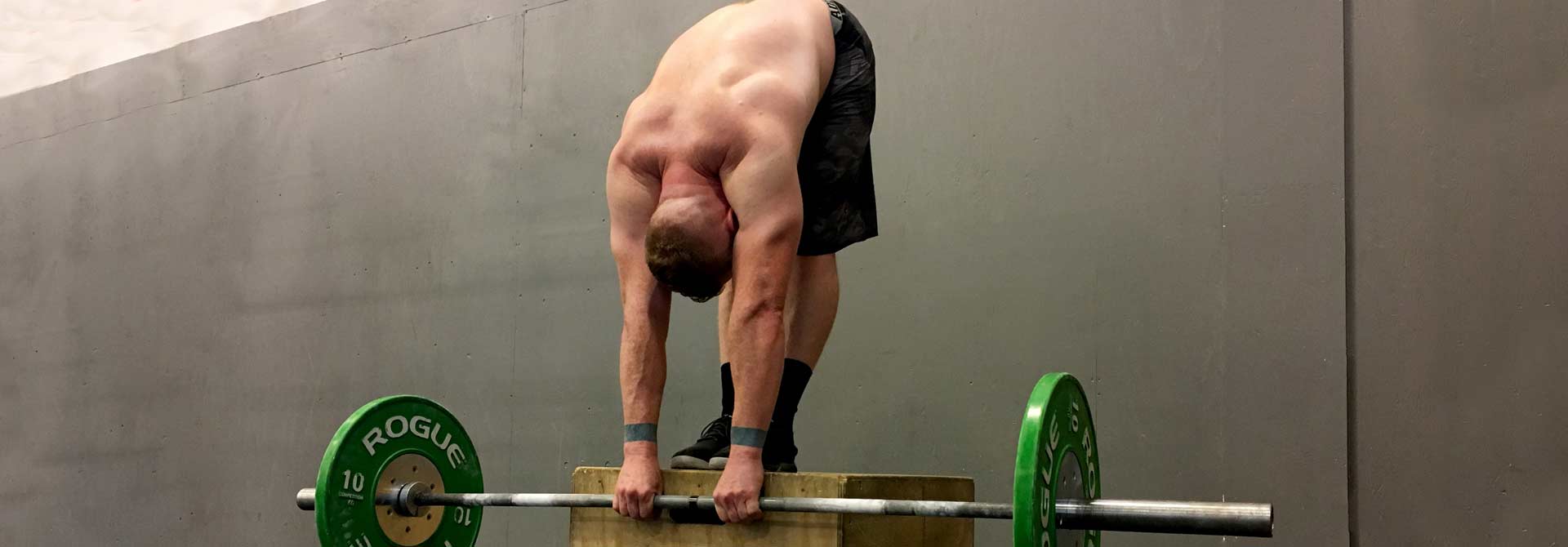The deadlift is the most metal lift of all. It’s the lift that requires you to be ‘on’ far more than any other lift. And it is (usually) the heaviest barbell lift you can do. It’s also incredibly intimidating once you reach a point where you’re getting closer and closer to your one-rep max, because unlike a bench press or a squat where you have to unrack the weight before you can commence the lift, in a deadlift you have absolutely no idea what your top set will feel like until you’re pulling that weight. Deadlifting is, put simply, a testament to one’s raw strength.
But is the deadlift really useful in any serious measure? If you’ve ever been recommended that video of Robert Oberst talking to Joe Rogan, you might have heard the argument that it really isn’t that great of a lift. It’s dangerous, it encourages you go to heavy, and it doesn’t have much carryover. And apparently, everyone is doing cleans anyway.
I’m a powerlifter, so there’s really no way out of
deadlifting (it also happens to be my best lift, so I’m definitely always going
to work on it). But I think that even people that don’t have any real interest
in getting a big powerlifting total can benefit from deadlifting. What Oberst
said aside, the deadlift is an amazing lift (and far less likely to hurt you
than a clean).
It’s far easier to teach, it does have great carryover,
it strengthens muscles that keep us healthy and help prevent (and reduce pain from) osteoarthritis in the lower back (and even address knee pain in cases of OA), and it’s an essential movement pattern
that’s more functional than 99% of the ‘functional’ training you’ll see top PTs
use on athletes and actors. Sure, it doesn’t translate into power –
lifts like the deadlift build your ability to exert force, not power
– but it does build strength, more so than arguably any other lift.
It’s a great strength builder
The first and most important feature of the deadlift is that
it builds strength. If we’re going bang-for-buck, the deadlift is your friend.
However, that doesn’t really mean much without context. What is strength? What
are you trying to do? Is strength measured by your grip? Is it how much you can
press? Is it how much your knee joint can handle?
The deadlift won’t necessarily help in any of these three
categories, depending on how it’s performed. But if we’re talking about an
exercise that incorporates as many muscles as possible, then the deadlift is
pretty up there.
To properly execute a deadlift, you need to press through
your quads, engage the lats, the core, keep the bar in your hands, and finish
the lift with your hamstrings and glutes, all while placing a ton of pressure
on your spinal erectors.
If we compare the deadlift with the other king of exercises,
the squat, then the two are pretty much toe-to-toe. The difference is that the
way the weight is loaded (in front of you, in your hands, rather than on your
back) allows you to overload the deadlift more and allows you to lift more
weight with less practice (and much less risk, given you can drop the bar more
easily).
To recap: the deadlift is going to be your heaviest barbell
lift. It’s going to place more stress on plenty of muscles than most other
compound lifts, let alone other exercises. Many other exercises are far harder
to execute with similar movement patterns (take, for example, a hang pull, or a
power clean), but require far more technique to execute properly, and will
usually require less weight to execute well.
It’s a main lift in competition
This is a powerlifting blog. I love powerlifting. I’m not an elite lifter or even a competitor yet, but I understand how the sport works and what the rules are. And as such, I train to improve in the three lifts of the competition. The deadlift is one of those lifts. That’s a major reason why I think it’s good. If you want to be a powerlifter, learn the deadlift.
I don’t care if you don’t like it. Don’t do the sport, then.
I don’t particularly like benching, which is why I pour over my bench press
technique even more than my deadlift and squat technique. And yes, I still have
a poverty bench. But it could be way worse.
It’s the most functional gym lift
How often are you going to swing something like a kettlebell between your legs? When are you ever going to do anything on top of a wobbly ball? Why are you holding that ‘earthquake’ bar? What the hell is a kipping pullup? Or, looking at the other two lifts, how often are you going to get under a heavy load to squat it up or press something off your chest while lying flat on a bench?
The deadlift is something we’ve all done at one point or another, more so than any other movement in the gym, simply by picking something relatively heavy up off the ground. I’m not talking about picking up the keys you dropped. I’m talking about picking up a sofa, a refrigerator, a TV, a chair. Whenever you pick something up off the ground properly, you’re deadlifting. If it’s something that isn’t alive, it’s specifically a deadlift (the whole point of the name is that it is dead weight, which is harder to pick up than live weight).
More accurately, the deadlift is part of a movement pattern called the hip hinge. While people do tell us to use our legs when picking something up, what they should be doing is tell us to keep our back straight. We’re generally coordinated enough to find the most effective way to pick something up off the ground, and stuff like ‘use your legs’ might not necessarily be the smartest cue, especially when the focus is on avoiding a rounded back (and we naturally use your legs anyway when told to keep our back stiff and straight).
On the bright side, going to the gym and deadlifting will teach your body how to pick anything up safely, as well as effectively. You won’t blow your back out in your senior years if you’ve been deadlifting all your life, and have spinal muscles made of pure carbon steel.
It teaches you to brace like nothing else
When I say that you need to engage your core and your lats when you’re deadlifting, it’s a little more complicated than that. A more accurate explanation is that, when people bend over to pick something up, they’re often flexing their spine. Then, when they get back up, they straighten up. A deadlift is not a back exercise – it’s a hip hinge.
This means you hinge at your hips while your torso (ideally)
remains entirely stiff. Your legs do most of the lifting, in the form of your
quads, hamstrings, and glutes. Your back shouldn’t move – it should play a
stabilizing role, ensuring that the relatively important column of bone in your
body that houses the all-important spinal cord and a whole system of
accompanying nerves, is kept safe and in a neutral position (that means neither
your cervical, thoracic, nor lumbar spine is excessively curving).
But how do you keep your torso stiff when there’s a ton of
weight pulling at all of those muscles? Through intraabdominal pressure. This
is produced through the Valsalva maneuver, which is performed by inhaling a
whole lot of air and compressing it with the entire core musculature. That
means holding your breath and squeezing. The best analogy I know of for this
sort of thing is an empty soda can. An empty soda can will easily hold a lot of
weight. Nick the side of the can, however, and it flattens. This is why it’s
important to keep a stiff spine, rather than letting it flex a little during
the lift. Now, pump the can full of compressed air. It’ll hold even more
weight, and it’s harder to squeeze the sides of it, because there’s way
more pressure inside the can. Your torso is the can.
Meanwhile, tucking your elbows in and pulling your shoulders
down (not necessarily back, just down to contract the muscles around your
spine) helps keep the upper back stiff. With a stiff upper and lower back,
you’re keeping your spine nice and safe throughout the whole lift.
Other lifts use this technique as well. It’s called bracing, and it’s important when you squat when you row a heavy weight, and even when you bench press (if only to reduce your range of motion). But because the deadlift is the heaviest lift, it helps you learn the importance and feeling of a properly braced core.
It strengthens the posterior chain
I keep talking about the posterior chain because it’s a
seriously underdeveloped part of the body for many sedentary individuals, and people
who generally only train their ‘glamour muscles’. While the posterior chain is
a beloved training target for women (it includes the ‘posterior’, after all),
it’s critically important for all people, for simple health reasons.
The muscles of the posterior chain are what keep your lower
back safe from injury and pain, which is especially important considering the
lower back is the most common injury site as we age, and years spent doing
little more than sitting in front of a computer won’t help you reduce those
statistics.
We’re talking about the hamstrings, the glutes, and the erectors. Deadlifting trains theses muscles very well, and if you don’t have much time to work out and have a desk job, then learning to do a deadlift safely and getting stronger in it is a good use of your time.
It’s really cool
Goddammit, it’s a lot of weight. And that’s really cool. People love to brag about their bench presses and gasp over the insane weights that Olympic athletes casually squat ass-to-grass, but the deadlift is still the coolest and most impressive heavy lift. And yeah, I love deadlifting. My long arms help, too.
To recap: the deadlift builds a lot of strength, it’s a
movement we use in life, it can help keep our backs healthy and pain-free in
old age, helps us learn to brace, and strengthens muscles that are often
neglected.





